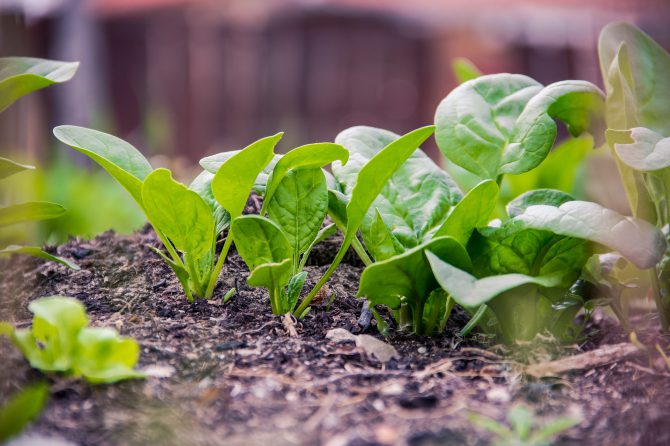
Many foods have earned superfood status, which seems to change according to media hype. But spinach has consistently retained its top rank as the superfood to beat all others because it is so dense in nutrients and healthy compounds. Eating spinach daily is linked to lower risk for heart disease, diabetes and cancer, three of our nation’s greatest chronic diseases. Spinach can also help improve circulation, lower blood pressure and maintain bone health. Some studies suggest spinach intake can reduce the risk of developing asthma.
Most of us recognize leafy greens are good for us, maybe because they’re high in antioxidants and fiber. But few realize greens, like spinach, have more to offer. They can be a good source of protein, are high in minerals like iron and calcium, and, when consumed raw, improve your capacity to make nitric oxide, a gas that widens blood vessels and improves blood flow.
Spinach is sold in a variety of ways: loose in bulk, bunched, packaged in bags, canned or frozen. Choose fresh spinach that is vibrant green with no yellowing on leaves or stems. Store fresh spinach, unwashed, in the refrigerator (to slow spoilage) and consume within 7-8 days. Toss when leaves become slimy. For longer storage, blanch and freeze for up to 8 months. The FDA has approved irradiation of bagged spinach to kill harmful bacteria. Researchers have found that this level of irradiation does not reduce nutrition content.
Because of its dark, rich green color, spinach makes a beautiful salad. Experts recommend consuming one dark green salad per day for optimal health. Spinach can be mixed with other greens like arugula, romaine or red leafy lettuce. To cook spinach, try wilting to retain nutrients. This means tossing raw greens into hot cooked foods like roasted vegetables or soups. Spinach can also be steamed, sautéed or microwaved. Frozen spinach is often used to make dips or quiches. Cooked spinach spoils more quickly than raw. Use within 3-4 days.
One advantage of spinach to other greens is that is has a long growing season. It sprouts early in the spring and can often live through frosts, making it a great option for container gardens in the Pacific Northwest. There are so many ways to add spinach leaves to your diet like topping sandwiches or wraps, tossing with cooked veggies, stirring into smoothies or adding to soups or stews. However you enjoy your spinach, make this superfood part of your daily routine.

Spinach Pasta Salad Recipe
Ingredients:
2 cups cooked pasta (try whole wheat shells, bow ties, macaroni or other small shapes)
4 cups spinach, bite-sized pieces
1⁄4 cup dried cranberries
2 Tablespoons sunflower seeds
1 can (15 ounces) mandarin oranges, drained
2 Tablespoons chopped cilantro or parsley (optional)
Dressing:
2 Tablespoons teriyaki sauce
2 Tablespoons vinegar
1⁄4 teaspoon garlic powder
1⁄8 teaspoon each salt and pepper 11⁄2 teaspoons sugar
1 Tablespoon vegetable oil
Directions:
1. In a large bowl, mix together teriyaki sauce, vinegar, garlic powder, salt, pepper, sugar and vegetable oil.
2. Add cooked pasta, spinach, dried cranberries, sunflower seeds, mandarin oranges and cilantro or parsley, if desired. Mix well. Cover and chill until ready to serve.
3. Refrigerate leftovers within 2 hours.
Note: Try a low fat Asian Salad Dressing from the store to replace the dressing ingredients.
PDF recipe download includes shopping and cooking notes, Spinach Pasta Salad and Spinach Chicken Italian recipes.
“Spinach: Top-Ranked Superfood” article by Stephanie Polizzi, MPH, RDN. Recipe and fact sheet provided by Oregon State University Extension Service with Healthy Bytes Community Networking Initiative.
You may also like our blog posts with quinoa recipes.
Leave a reply
